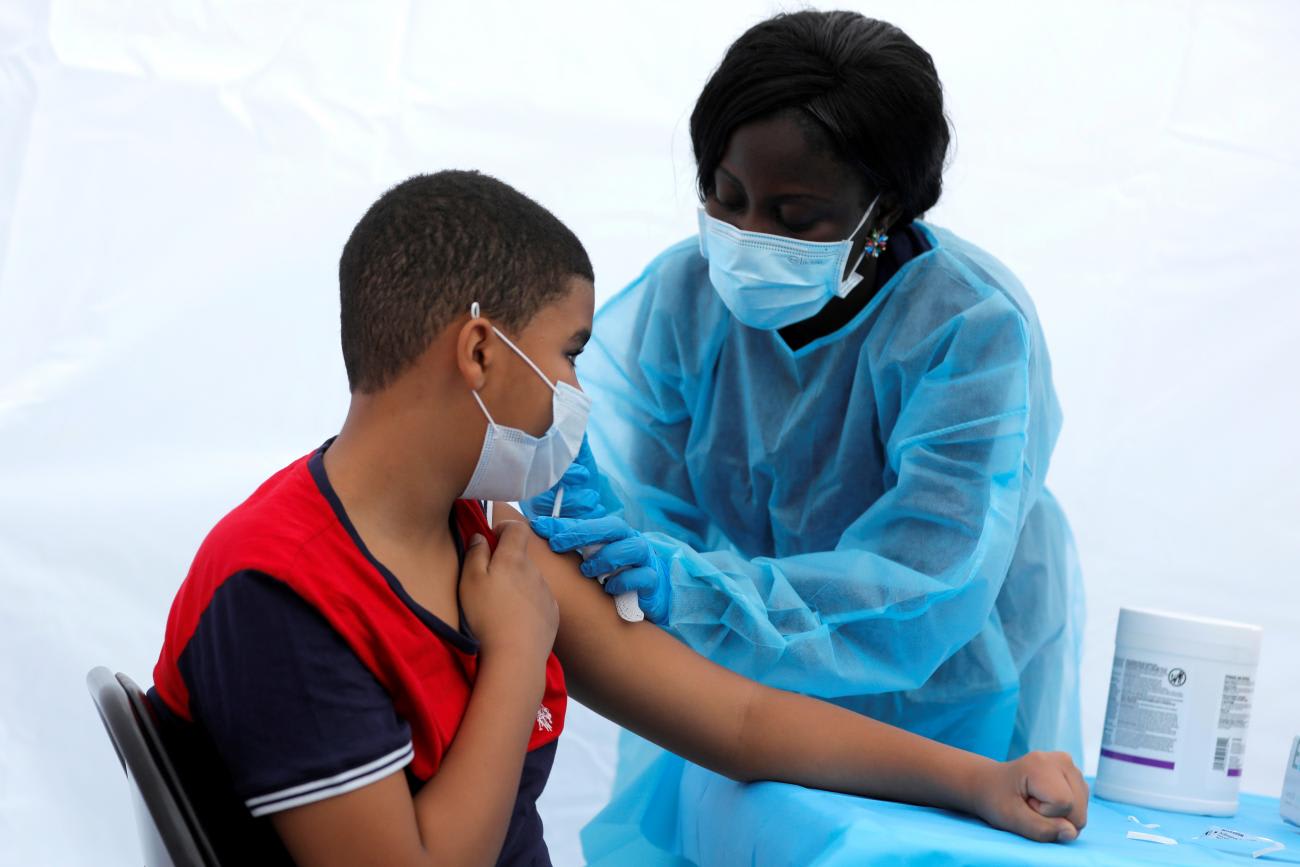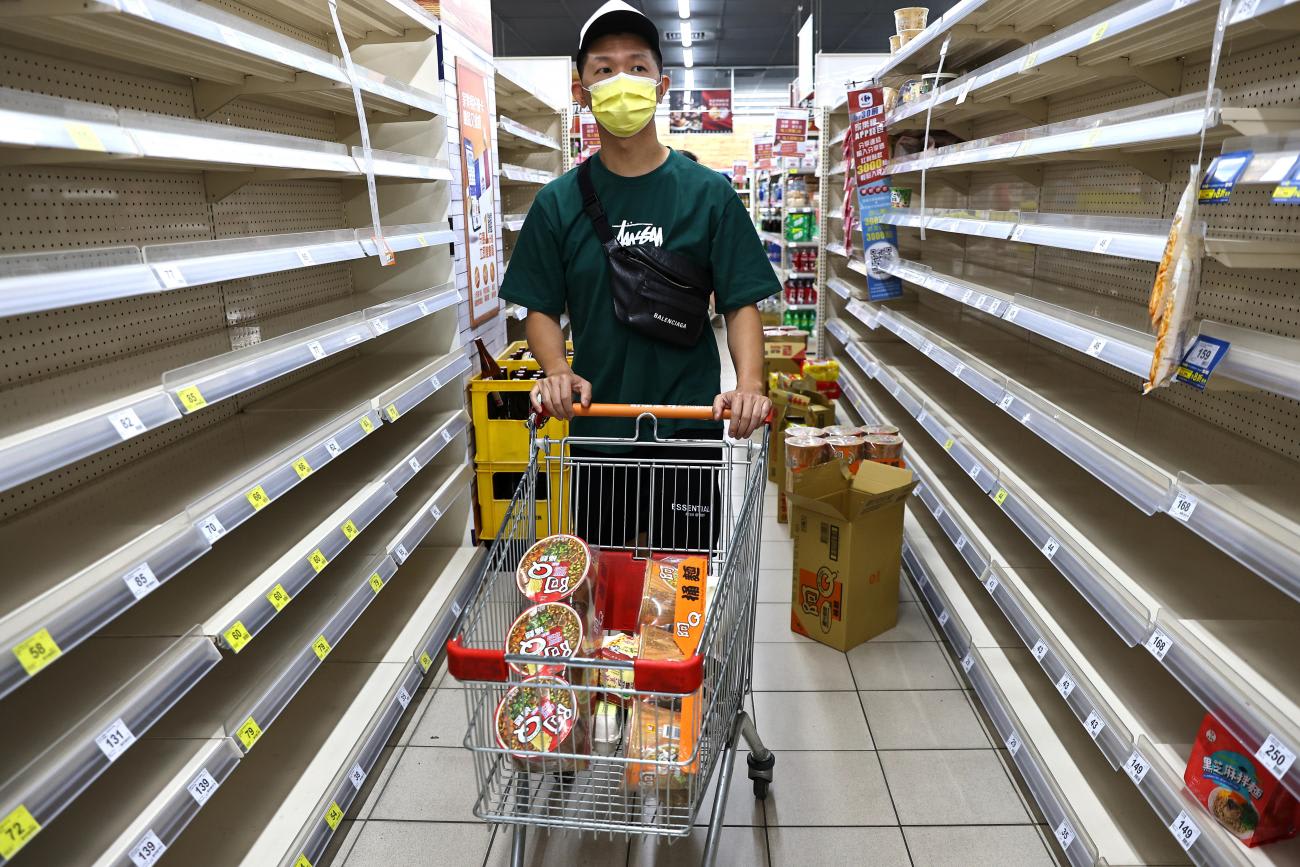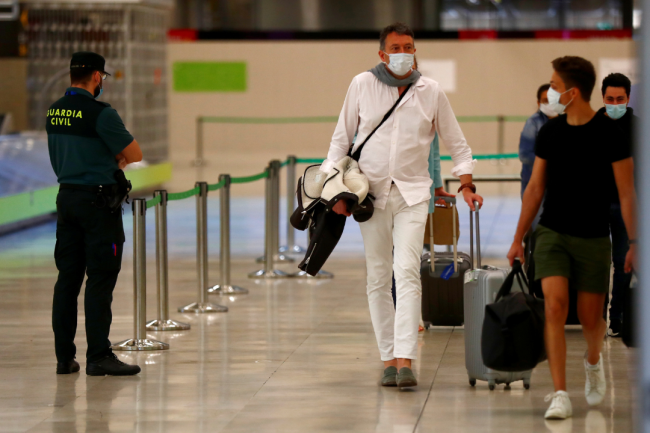While only a fraction of the world is fully vaccinated, some regions—mostly within high-income countries where vaccines are accessible—are entering a liminal space where businesses, governments, the public sector, individuals, and families may start to consider longer-term plans. But as some of us edge out into group settings and public spaces again, we face many unknowns and "what-ifs."
It can feel unsettling and confusing. There is no shortage of opinions on what is safe and what is not. Some crystal ball gazers say summer parties in the United States will be harmless while others predict life will not return to normal "for at least two years."
To better understand the risk, we have taken a more analytical, data-based approach. Building upon the thinking that we might never reach herd immunity, we have based this article on existing and publicly-available data in order to provide guidance and to help everyone from families to businesses begin some long-term planning. We have broken down our findings into "the good" and "the bad"—identifying a short list of positive and negative indicators to watch for. A third category, "the ugly," flags potentially important geopolitical and economic impacts of the pandemic that could impact individuals, governments, businesses, and more.

The Good
Ongoing vaccine rollout globally
The rollout of vaccines has progressed ahead of schedule in the United States, and on track in many other high-income countries, but many nations lag behind as wealthy countries have prepurchased the bulk of vaccines. At the time of writing this article, more than 25 percent of the population in Europe and North America was vaccinated, but less than 5 percent of the population had received jabs in Asia, and just over 1 percent of people in Africa were vaccinated. Vaccine equity is critical for saving lives worldwide. Vaccines remain our most powerful global tool because they not only combat the current virus, but prevent future mutations and spread. Vaccines administered as a population rate by country is a simple yet powerful indicator to watch—the greater the number of vaccines given to all eligible individuals around the world, the more reasonable it is to have confidence in a more stable future.
Vaccines remain our most powerful global tool because they not only combat the current virus, but prevent future mutations and spread.
More vaccine development and use: children and boosters
Pharmaceutical companies are continuing to develop vaccine technologies, and advances on this front could have profound positive effects on how quickly the world gets back to normal. Initially, about two billion people under age 16 were ineligible for the current COVID-19 vaccines. But recent approvals of the Pfizer-BioNTech vaccine now allow 12 to 15-year-olds in multiple countries to be vaccinated against COVID-19. Expanding the age of vaccine eligibility gets us closer to "herd immunity" by reducing the potential for spread of the virus in children, and it has knock-on effects: school reopenings and the full resumption of youth sports and other kid-centered activities. As new variants continue to emerge, vaccine makers are also developing booster shots that target new strains of the virus better than current formulations and will give even greater confidence in a steady global recovery. While some say giving vaccines to children in high-income countries may take away supply for lower-income countries, even the possibility to vaccinate children is a positive sign in our fight against the pandemic. Monitoring availability of vaccines for children and availability of vaccine boosters indicates how well overall vaccine rollout is going.

The Bad
Variants: their spread, as well the proliferation of new, more dangerous variants
Since COVID-19 was first detected in 2019, it has mutated thousands of times, and will continue to do so. Most of these mutations have minimal pathogenic impact, but a few have proven to be more infectious, less receptive to vaccines, or able to "break through" immunity achieved through previous infection. The catastrophic pandemic situation in India is a powerful example of a variant's impact—in this case, the variant B.1.617. We have tracked places where we estimate that close to 100 percent of the population is infected. This information is available through many COVID-19 dashboards, including IHME's "estimated infections" plots. It shows, for example, that in Delhi, India on March 1, 2021, about 56 percent of the population had been infected since the beginning of the pandemic; then, suddenly, the data indicates that huge numbers of new infections were reported. This is only possible if those who were previously infected are getting COVID-19 a second time, indicating that a new variant is breaking through previous immunity. Watching for the rise of new variants can guide future confidence in planning.
Cumulative Infections in Delhi, As a Percent of Population
Lower vaccine confidence globally
Confidence in COVID-19 vaccines has varied widely in the past six months, and it continues to fluctuate in response to new information, including the very rare blood clots associated with the Johnson & Johnson shot. There is no way to have confidence in a stable COVID-19 future without widespread vaccine acceptance. Vaccines are the best tool we have to contain this virus and "get back to normal." Proliferation of disinformation or misinformation can also lead to greater public confusion. Watching the percentage of the unvaccinated population willing to receive a COVID-19 vaccine—a figure regularly collected through a number of global surveys and reported through IHME's policy briefings—is a key indicator in determining confidence for long-term planning
Vaccine Confidence Over Time in Florida and Nigeria
Uncertainty about reinfection, natural immunity, and long-term vaccine efficacy
Despite the unprecedented global scale-up of data collection and research, there are still a lot of unknowns about how the SARS-COV-2 virus behaves. There is still no reliable data on how long natural immunity lasts, if a second infection with COVID-19 will lead to more or less severe symptoms than a first infection, and when vaccine-derived immunity will wane. It is unclear if a person is less likely to transmit the virus the second time they are infected. There are many unknowns, but the indicators to monitor are available in a few data-rich places such as the United Kingdom (rates of second infection) and United States (rates of infections amongst the vaccinated). IHME's global rates of hospitalization can also provide helpful insights.

The Ugly
Covid-19 has affected much more than health; the global economy, political stability, and the very social fabric of society has changed for most of the world. In considering confidence in long-term planning, a few non-health indicators are critical to quantify non-health-related consequences of the pandemic.
Global market and supply-chain infrastructure
Already, the pandemic has led to massive upheavals in the global shipping industry. For example, key shortages in microchips have caused automobile manufacturing to "idle." Some simple indicators to monitor global supply-chain health include the world container index and port throughput indices, which represent the cost of shipping and trade volume, respectively. Large fluctuations in these two indicators—increases in the container index and decreases in throughput indices— mean global supply chains are slowing, or shipping volume is decreasing.
Global vaccine equity, humanitarian crises, and political insecurity
Lastly, as the gap in vaccination rates widens between high-income and low-income countries, governments worldwide are considering "vaccine passports," travel restrictions, and other limitations on global movement. This has potential to lead to significant divisions in the world, humanitarian crises, and political insecurity if part of the global economy moves ahead while others are left behind. As such, there are several important non-epidemiological indicators to watch. The Global Peace Index is a composite measure of 23 indicators capturing conflict, societal safety, and militarization. And global progress toward ending poverty, improving health and education, reducing inequality, and spurring economic growth should be monitored through progress on Sustainable Development Goal indicators.
Summary of Indicators
It is not difficult to imagine an infinite number of doomsday scenarios, but not much is gained by fear-mongering and crystal ball gazing. By knowing where to look for leading indicators, longer-term planning is possible again.
Businesses, investors, governments, and the public sector can start to shift from "situational dashboards" to "contingency planning," and can identify a short-list of leading indicators to monitor. It is premature to fully "return to normal" and revisit our pre-COVID five- and ten-year plans—we must continue to grapple with risks and unknowns. But while this pandemic has brought countless unforeseen challenges to the entire world, we no longer need to wait indefinitely. It is time for longer-term thinking.

ACKNOWLEDGEMENTS: The authors would like to thank Rebecca Sirull for fact checking this post; and Catherine Bisignano, Dr. Elizabeth Serieux, and Katie Leach-Kemon for providing feedback.
EDITOR'S NOTE: The authors are employed by the University of Washington's Institute for Health Metrics and Evaluation (IHME), which produced the COVID-19 forecasts described in this article. IHME collaborates with the Council on Foreign Relations on Think Global Health. All statements and views expressed in this article are solely those of the individual authors and are not necessarily shared by their institution.












